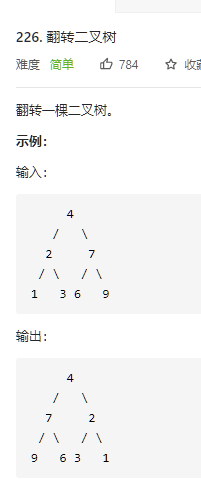四种基本遍历
围绕着三种遍历dfs有许多的习题
其中一大类是后序遍历的状态转移,自底向上的写法,有返回值的dfs,通过左右孩子推出中间节点的值或者状态然后继续上推
前序:
public void preTraversal(Node node){
if (node == null) //很重要,必须加上 当遇到叶子节点用来停止向下遍历
return;
System.out.print(node.getValue()+" ");
preTraversal(node.getLeft());
preTraversal(node.getRight());
}
中序:
public void MidTraversal(Node node){
if (node == null)
return;
MidTraversa(node.getLeft());
System.out.print(node.getValue()+" ");
MidTraversa(node.getRight());
}
后序:
public void postTraversal(Node node){
if (node == null)
return;
postTraversal(node.getLeft());
postTraversal(node.getRight());
System.out.print(node.getValue()+" ");
}
前序:
class Solution {
public:
vector<int> preorderTraversal(TreeNode* root) {
vector<int> result;
stack<TreeNode*> st;
if (root != NULL) st.push(root);
while (!st.empty()) {
TreeNode* node = st.top();
if (node != NULL) {
st.pop();
if (node->right) st.push(node->right); // 右
if (node->left) st.push(node->left); // 左
// 中,push NULL是一个标志位,当前中中间节点
st.push(node);
st.push(NULL);
} else {
st.pop();
node = st.top();
st.pop();
result.push_back(node->val);
}
}
return result;
}
};
后序:
class Solution {
public:
vector<int> postorderTraversal(TreeNode* root) {
vector<int> result;
stack<TreeNode*> st;
if (root != NULL) st.push(root);
while (!st.empty()) {
TreeNode* node = st.top();
if (node != NULL) {
st.pop();
st.push(node); // 中
st.push(NULL);
if (node->right) st.push(node->right); // 右
if (node->left) st.push(node->left); // 左
} else {
st.pop();
node = st.top();
st.pop();
result.push_back(node->val);
}
}
return result;
}
};
中序:
class Solution {
public:
vector<int> inorderTraversal(TreeNode* root) {
vector<int> result;
stack<TreeNode*> st;
if (root != NULL) st.push(root);
while (!st.empty()) {
TreeNode* node = st.top();
if (node != NULL) {
st.pop(); // 将该节点弹出,避免重复操作,下面再将右中左节点添加到栈中
if (node->right) st.push(node->right); // 添加右节点(空节点不入栈)
st.push(node); // 添加中节点
st.push(NULL); // 中节点访问过,但是还没有处理,加入空节点做为标记。
if (node->left) st.push(node->left); // 添加左节点(空节点不入栈)
} else {
// 只有遇到空节点的时候,才将下一个节点放进结果集
st.pop(); // 将空节点弹出
node = st.top(); // 重新取出栈中元素
st.pop();
result.push_back(node->val); // 加入到结果集
}
}
return result;
}
};
层序遍历:
public List<List<Integer>> levelOrder(TreeNode root) {
List<List<Integer>> res = new LinkedList<>();
BFS(root, res);
return res;
}
private void BFS(TreeNode treeNode, List<List<Integer>> res) {
if (treeNode == null) {
return;
}
Queue<TreeNode> queue = new LinkedList<>();
queue.offer(treeNode);
while (!queue.isEmpty()) {
List<Integer> level = new LinkedList<>();
int n = queue.size();
for(int i = 0; i < n; i++) {
TreeNode tmp = queue.poll();
if(tmp != null) {
level.add(tmp.val);
queue.offer(tmp.left);
queue.offer(tmp.right);
}
}
if(level.size() > 0) {
res.add(level);
}
}
}
后续遍历 + 状态转移 + 结果存储类
自底向上的解法,配合状态转移与最终结果记录,一般采用后续遍历
https://leetcode-cn.com/problems/balanced-binary-tree/

核心思路:
自底向上,有状态的转移;
后序遍历,左孩子错右孩子错那么parent一定是错的。
返回值与存储结构
class Solution {
public boolean isBalanced(TreeNode root) {
return height(root) >= 0;
}
public int height(TreeNode root) {
if (root == null) {
return 0;
}
int leftHeight = height(root.left);
int rightHeight = height(root.right);
if (leftHeight == -1 || rightHeight == -1 || Math.abs(leftHeight - rightHeight) > 1) {
return -1; // -1 作为失败标志
} else {
return Math.max(leftHeight, rightHeight) + 1; // 正常的高度返回
}
}
}
同类题1
https://leetcode-cn.com/problems/diameter-of-binary-tree/  后序遍历的又一个例子,变来变去的只是从子问题到大问题的推导
后序遍历的又一个例子,变来变去的只是从子问题到大问题的推导
class Solution {
Integer ans = 0;
public int diameterOfBinaryTree(TreeNode root) {
if(root == null) {
return 0;
}
postOrder(root);
return ans - 1;
}
private int postOrder(TreeNode root) {
if(root == null) {
return 0;
}
int left = postOrder(root.left);
int right = postOrder(root.right);
ans = Math.max(ans,left + right + 1); // 最终结果:使用一个公共字段保存结果
return Math.max(left, right) + 1; // 当前状态:大问题的解存储的状态转移不同,存储的实际上是高度
}
}
同类题2 
class Solution {
Integer ans = Integer.MIN_VALUE;
public int maxPathSum(TreeNode root) {
if(root == null) {
return 0;
}
postOrder(root);
return ans;
}
private int postOrder(TreeNode root) {
if(root == null) {
return 0;
}
int left = Math.max(postOrder(root.left), 0);
int right = Math.max(postOrder(root.right), 0);
ans = Math.max(ans, left + right + root.val); // 使用一个公共字段保存结果
return Math.max(left, right) + root.val; // 大问题的解存储的状态转移不同
}
}
翻转二叉树:

简单的后续遍历:
public TreeNode invertTree(TreeNode root) {
if(root == null) {
return root;
}
return postOrder(root);
}
private TreeNode postOrder(TreeNode root) {
if(root == null) {
return root;
}
postOrder(root.left);
postOrder(root.right);
TreeNode tmp = root.left;
root.left = root.right;
root.right = tmp;
return root;
}
求最大BST树  二叉搜索树特征:中序遍历val递增
二叉搜索树特征:中序遍历val递增
还是后序遍历
/**
* Definition for a binary tree node.
* public class TreeNode {
* int val;
* TreeNode left;
* TreeNode right;
* TreeNode(int x) { val = x; }
* }
*/
class Solution {
class Result {
TreeNode node; // BST根节点
int size; // BST的size
int max; // BST的最大值
int min; // BST的最小值
}
public int largestBSTSubtree(TreeNode root) {
Result r = visit(root);
return r == null ? 0 : r.size;
}
public Result visit(TreeNode node) {
if (node == null) return null;
Result l = null, r = null;
if (node.left != null) l = visit(node.left);
if (node.right != null) r = visit(node.right);
// 当前树为BST
boolean lValid = (l == null || (l.node == node.left && l.max < node.val));
boolean rValid = (r == null || (r.node == node.right && r.min > node.val));
if (lValid && rValid) {
Result result = new Result();
result.node = node;
result.max = r == null ? node.val : r.max;
result.min = l == null ? node.val : l.min;
result.size = (l == null ? 0 : l.size) + (r == null ? 0 : r.size) + 1;
return result;
}
// 左右子树中找到了BST
if (l != null && r != null) {
return l.size > r.size ? l : r;
}
if (l != null) return l;
if (r != null) return r;
return null;
}
}
作者:jzj1993
链接:https://leetcode-cn.com/problems/largest-bst-subtree/solution/si-lu-qing-xi-de-javadai-ma-onfu-za-du-1ms-by-jzj1/
来源:力扣(LeetCode)
著作权归作者所有。商业转载请联系作者获得授权,非商业转载请注明出处。
最近公共祖先
https://leetcode-cn.com/problems/lowest-common-ancestor-of-a-binary-tree/solution/er-cha-shu-de-zui-jin-gong-gong-zu-xian-by-leetc-2/ 还是后序遍历,父节点的状态转移方程(返回值)如上
还是后序遍历,父节点的状态转移方程(返回值)如上
最后结果可以通过放置在外面代入求得
class Solution {
private TreeNode ans;
public Solution() {
this.ans = null;
}
private boolean dfs(TreeNode root, TreeNode p, TreeNode q) {
if (root == null) return false;
boolean lson = dfs(root.left, p, q);
boolean rson = dfs(root.right, p, q);
// 结果存储
if ((lson && rson) || ((root.val == p.val || root.val == q.val) && (lson || rson))) {
ans = root;
}
// 状态转移
return lson || rson || (root.val == p.val || root.val == q.val);
}
public TreeNode lowestCommonAncestor(TreeNode root, TreeNode p, TreeNode q) {
this.dfs(root, p, q);
return this.ans;
}
}